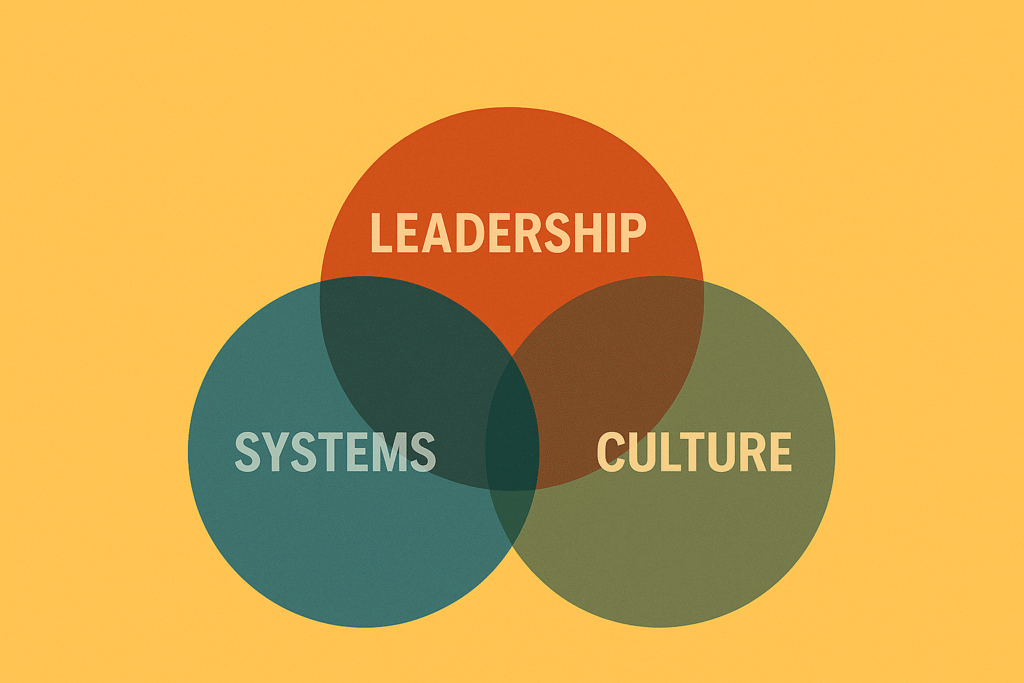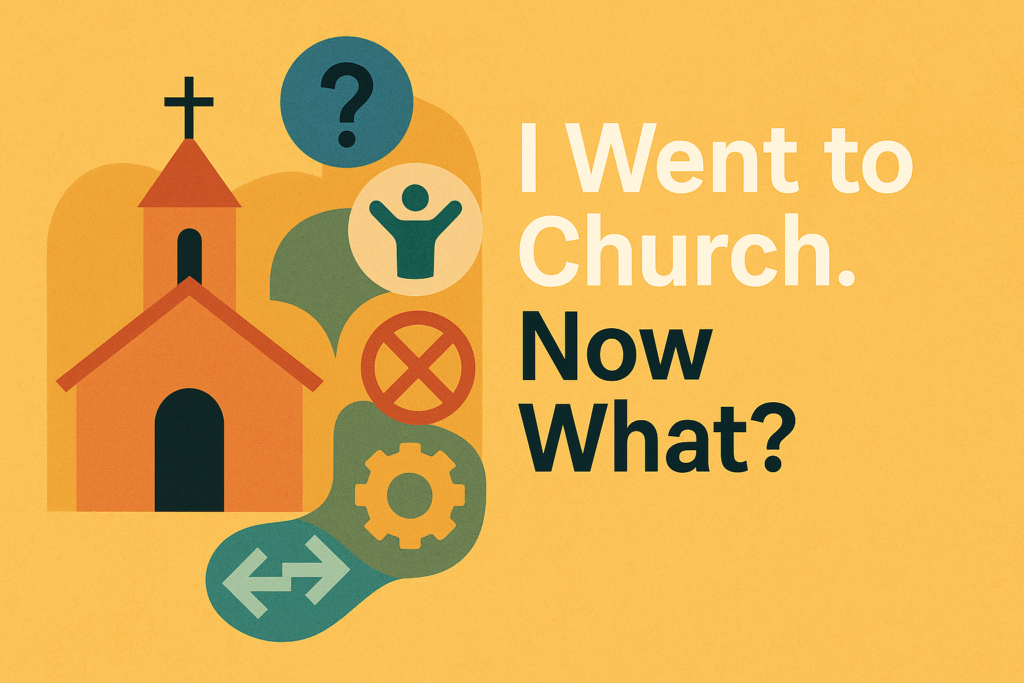Sunday morning. You poured your heart into the message. People nodded, took notes, some even came up afterward to say how much it meant to them. The worship was powerful. The coffee was hot. Everyone seemed engaged.
And then Monday hit.
By Tuesday, most of your congregation has forgotten what you preached. Not because they don’t care but…
Life happened.
The boss made unreasonable demands. The kids had meltdowns. The bills piled up. The car broke down. And that moment of conviction they felt on Sunday? Gone.
Here’s the uncomfortable truth: Your people spend about 2 hours at church each week. That’s roughly 1-2% of their waking hours. The other 98-99%? That’s where real life happens. That’s where marriages struggle, parenting gets hard, work creates ethical dilemmas, and loneliness creeps in.
And if we’re honest, most churches—no matter how great the Sunday service—aren’t equipped to bridge that gap.
What Happens to Your Message After They Walk Out the Door?
I’ve spent months talking to church leaders across the country. Discipleship pastors. Communications directors. Lead pastors. And here’s what I’ve discovered through countless conversations and research:
Most people forget your sermon within 24-48 hours.
Not because your message wasn’t good. Not because they weren’t paying attention. But because that’s how human memory works. Studies show that without reinforcement, we forget up to 70% of what we learn within a day.
Think about that for a second.
You spend hours preparing a message. You pour your heart into it. You pray over it. You craft every illustration, every point, every application. And by Tuesday morning, most of your congregation can’t even remember what you preached about.
And here’s what really convicted me personally
I’ve been that person. I go to church most Sundays. I hear good messages. I even take notes. But by Monday or Tuesday, I’ve already forgotten what the sermon was about. I’m just trying to get through my to-do list. Make dinner. Help with homework. Fix whatever broke.
I’m not reading my Bible as much as I should. I’m not praying consistently throughout the day. I’m not looking for opportunities to show Jesus’ love to people around me.
I’m just… living.
And I don’t think I’m alone. I think this is the reality for most people sitting in your pews. Not because they don’t want to grow—but because nothing is helping them bridge the gap between Sunday inspiration and Monday application.
The Five Barriers Keeping Your Church Stuck
After hundreds of conversations with church leaders and deep research into how discipleship actually happens, I’ve identified five barriers that exist in almost every church. These aren’t obvious problems—they’re invisible patterns that quietly prevent real growth from taking root.
Barrier #1: Sunday Faith Doesn’t Make It to Monday
Barrier #2: No Clear Path from “I Showed Up” to “I’m Making an Impact”
Barrier #3: Content Doesn’t Stick and Engagement Dies After Sunday
Barrier #4: Talented People Sit on the Sidelines While a Few Leaders Burn Out
Barrier #5: No Way to Measure If Discipleship Is Actually Happening
Here’s what makes these barriers so dangerous: they don’t exist in isolation. They compound each other. When your message doesn’t carry into the week, people can’t see a clear path forward. When content doesn’t stick, talented people stay disengaged. When you can’t measure growth, you don’t know who needs what. The whole system stalls.
Most pastors don’t even realize these barriers exist until it’s too late.
You see people in the pews. You see them nodding. You see them serving in ministries. And you assume growth is happening. But underneath the surface, something else is going on.
People show up hungry for transformation, but by midweek they’re back to survival mode. The conviction they felt on Sunday fades before they ever face the situation where they needed it. That parenting challenge on Tuesday. That ethical dilemma at work on Wednesday. That relational conflict on Thursday.
Your message had the answer—but it was already gone from their memory when they needed it most.
And because nothing is reinforcing what you taught, because there’s no system carrying your message into the moments that actually matter, the gap between Sunday and the rest of the week just keeps growing.
Meanwhile, you’re working harder than ever. Preparing better sermons. Creating more content. Adding new programs. Trying different outreach strategies. But growth stays flat. Engagement remains surface-level. The same handful of people carry everything while others watch from the sidelines.
The vision you have for your church—the multiplication, the impact, the transformed communities—stays just out of reach.
Not because you’re not trying hard enough.
But because the infrastructure isn’t there to sustain growth beyond Sunday morning.
And here’s the thing most pastors don’t realize: this isn’t about effort.
This is about systems, not effort.
When there’s no mechanism to carry Sunday into Monday through Saturday, when there’s no way to reinforce your message in the moments people actually need it, when there’s no clear path showing people how to grow—that’s when churches plateau. That’s when giving stagnates. That’s when your core team burns out. That’s when people quietly drift away.
Not because they don’t love Jesus. Not because they don’t value what you’re doing.
They’re not experiencing the consistent growth and transformation they came looking for.
Picture a church that doesn’t feel like it’s constantly trying to restart momentum every Monday.
In this church, the sermon isn’t a Sunday event—it’s the spark that carries through the week. Members wake up on Tuesday still thinking about what they heard. By Wednesday, they’re acting on it. By Thursday, they’re sharing it.
The pastor isn’t wondering if the message landed. They can see it landing—in conversations, decisions, and stories surfacing all week long.
Leaders aren’t drained from trying to keep people engaged. They’re energized because participation happens naturally. People are volunteering, mentoring, inviting, leading—without being chased down.
Every person knows where they fit. The next step is obvious. From first-time guests to lifelong members, everyone can see the path in front of them—and they’re taking it.
The church isn’t guessing if discipleship is working. They can measure growth. They know who’s thriving, who’s stuck, and where to focus next. They’re not just tracking attendance—they’re tracking transformation.
This is what happens when the five barriers come down.
The church stops managing decline and starts multiplying life.
Messages travel further. Momentum builds faster. Discipleship deepens wider.
It’s not a fantasy. It’s what becomes possible when Sunday finally connects to the rest of the week.
Here’s what I’ve learned:
The solution requires three things working together as a system, not as separate programs.

First, you need clear leadership and vision that mobilizes people—not generic mission statements, but specific direction that shows people exactly what kind of person they’re becoming and what kind of impact they’re making.
Second, you need systems that multiply impact without multiplying workload— such as, processes that identify gifts, clear pathways for congregation ascension, and a leadership development program. Many hands make light work.
Third, you need to cultivate a culture woven into daily life— hungry drives action, and hunger comes from an intentional culture.
When these three elements work together, they create momentum that compounds instead of barriers that stall growth.
And don’t get me started on AI tools
AI sermon generators. Social media automation tools. Video clipping platforms. Churches try them, assign volunteers to learn them, pay the subscriptions. And within a few months, most of these tools get abandoned. Why? It doesn’t solve the core problems, its just tools added to a maxed out team.
Over the coming weeks, I’m going to break down exactly how to address these five barriers.
For each one, I’ll show you why it exists and what’s really causing it, what it’s costing your church in real terms, three to five practical steps you can implement immediately, and how to build systems that prevent it from coming back.
This isn’t theory. These are strategies working in real churches right now.
My goal isn’t to sell you something. My goal is to give you information that helps you lead more effectively. I’m sharing what I’ve learned from hundreds of conversations with church leaders wrestling with these exact challenges.
You’ll be able to implement these approaches whether you ever work with us or not. Because I care more about seeing churches thrive than making a quick sale.
Here’s what I believe
When people leave church on Sunday and wonder “now what?”—it’s not because they don’t care.
It’s because they’re hungry for more and no one’s showing them how to get there.
Let’s change that.

